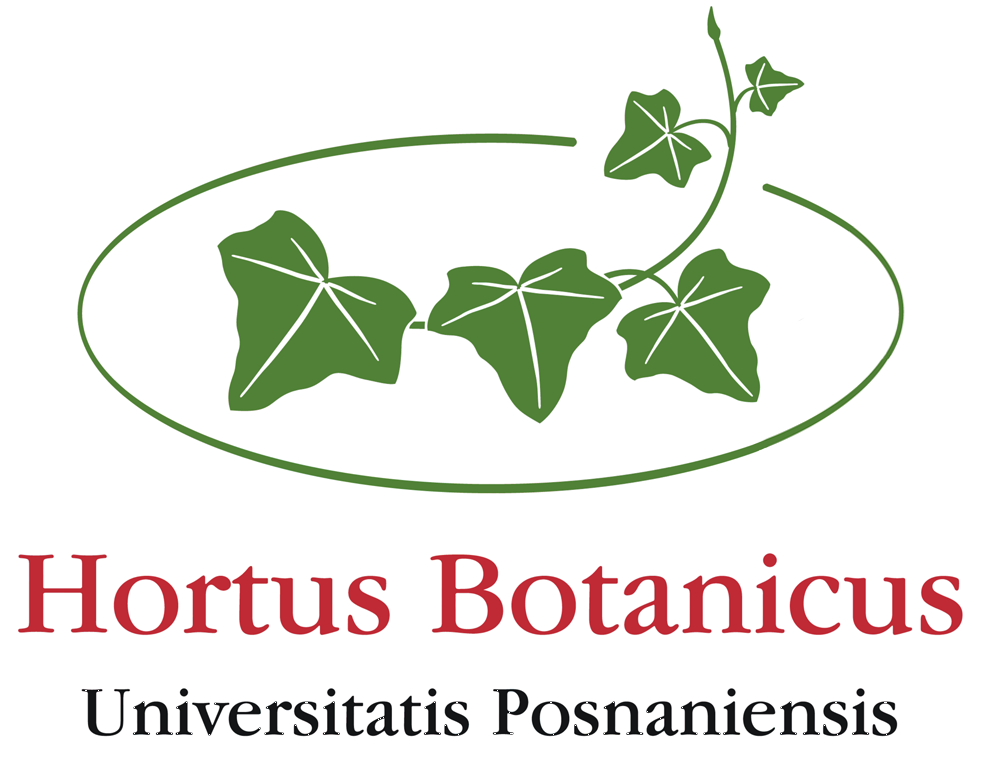Greenhouse collections
plants of the intertropical and subtropical zones
The greenhouses in our Botanical Garden were built in the 1950s and 1960s. They were designed to collect plant species of intertropical and subtropical zones providing valuable material for research and didactics. The basis for building a collection of tropical plants is the widest possible presentation of the diversity of species with interesting and representative biology for individual plant formations and climatic-plant zones. Plants are grouped in greenhouses according to their environmental requirements. At present, about 550 species and varieties of plants have been collected. Plants are obtained through seed exchange, from donations and from purchase. The most abundantly represented families are: the picture-forming Araceae, orchid-forming Orchidaceae, pineapple-forming Bromeliaceae, pepper-forming Piperaceae, begonia-forming Begoniaceae. An interesting and valuable group in our collection are the sagophytes. This ancient group of plants, which 200 million years ago was an important component of the flora, is presented by eight species that have reached a sizeable size and some of them are already flowering. These are Ceratozamia mexicana, Cycas revoluta, Cycas circinalis, Encephalartos ferox, Encephalartos manikensis, Stangeria paradoxa, Zamia integrifolia.
Utilitarian plants such as cherimoya Annona muricata, coffee Coffea arabica, guava Psidium cattleianum, cocoa Theobroma cacao, papaya Carica papaya, avocado Persea americana, single-flowered clove Eugenia uniflora, and others grow alongside.
In the greenhouse, where we can provide higher humidity and temperature, we collect collections of plants whose representatives are very often hosted in homes as ornamental plants are the Begoniaceae, Commelinaceae, Marantaceae, Gesneriaceae, Pasifloraceae, Urticaceae, Zingiberaceae, and a growing collection of the original genus Amorphophallus sp. Amorphophallus bulbifer, Amorphophallus konjac, Amorphophallus albus, and Amorphophallus thaiensis have already bloomed, their tubers have reached appropriate sizes and plants in bloom are presented in the teaching pavilion.
One greenhouse has a pool and twenty small pools for mud plants. In the main pool in which a constant temperature of 27°C is maintained, we have been growing the same specimen of Victoria crusiana of Paris continuously since 2006, which is very rare in European botanical gardens, where, if there are already these unique plants, they are grown as annuals from spring to autumn. In our Garden you can enjoy them all year round, and the plants bloom all the time with short breaks. In the pool we grow other aquatic plants, for example Pistia stratiotes, water hyacinth Eichornia crassipes, and nutmeg lotus Nelumbo nucifera. In the side pools we have several valuable plant species from the bizarre mangrove plant formation, the mangroves. Acanthus, Acrostichum, Bruguiera, Rhizophora, and several other companion species on the coastal beaches. For several years we have been growing Santalum album sandalwood is a very rare species in botanical garden collections is semi-parasitic and is very capricious.
Epiphytes, lianas and vines are a common element in various intertropical formations, where plants must compete for light and water. Plants in the families Bromeliaceae, Cactaceae, Peperomiaceae, Orchidaceae, Vitaceae, Araceae and Polypodiaceae live on trees taking up and collecting water in a variety of ways.
In greenhouses you will find numerous pineapple-like Bromeliaceae, such as: Vriesea carinata, Neoregelia cyanea, as well as species from the genera Billbergia, Aechmea, Guzmania and Tillandsia. They take up water by means of absorptive scales on their leaves. Epiphytic orchids, such as Vanilla imperialis and Brassavola digbyana, as well as taxa from the genera: Stanhopea, Cattleya and Bulbophyllum, take up water during the rainy season using aerial roots supplied with a special tissue called velamen. Epiphytic cacti, such as those of the genera: Rhipsalis, absorb water with their entire surface.
We see interesting adaptations in some ferns. In Asplenium nidus, detritus accumulates at the base of a dense rosette. Even more effective are the niche leaves that epiphytic ferns of the genus Platycerium sp. develop, i.e. the so-called moose horns.
Epiphytes are also not lacking among dicotyledonous plants. Such include Dischidia rafflesiana, characterized by pronounced heterophily. Other myrmecophilous epiphytes, namely Myrmecodia, Hydnophytum, also present an unusual form.
Many plants, while not epiphytes, can occasionally grow on trees. These adventitious epiphytes develop from diaspores that have accidentally found their way into accumulated detritus in crown branches or hollows, brought by the wind or by animals. Peperomia peperomia have a particular predilection for adventitious epiphytism.
Subtropical plants from the sclerophyllous vegetation zone come from the Mediterranean, California, central Chile, southern Africa and southwestern Australia. We have representatives from these areas of the world.
Most important and essential for the life of plants from these regions is the unequal interaction of climate elements. Most of the precipitation falls in the winter period. Thus, moisture and heat, pass each other in time, which affects the originality and specificity of the vegetation. There are very many trees and shrubs with leathery, tough, small leaves. Having stems sometimes in needle-like or scaly form. Such transformed stems are branchlets and in our collection we can see them in asparagus Asparagus acutifolius and Ruscus aculeatus.
However, there are also plants in the area that have leaves abundantly covered with hairs, and their physiology is quite different, and when they lack water, they shed their leaves because they cannot reduce transpiration. In our collection, this group of plants is represented by Cistus purpurea. The third group of plants in the area are laurel plants or otherwise evergreen laurel species, which need wet winters, and in summer the habitat must be constantly moist – laurel Laurus nobilis is the best example in the collection.
The Mediterranean area was the focus of the oldest cultures from the earliest times. The area was densely populated, and the mild climate was conducive to the cultivation of various useful plants. In greenhouses we have cork oak Quercus suber, holm oak Quercus ilex, European olive Olea europaea, carob Ceratonia siliqua, noble laurel Laurus nobilis, evergreen cypress Cupressus sempervirens, and pine Pinus pinea. In addition, the shrubs are entwined with vines such as Smilax aspera colcora. The berry crunch, called strawberry tree Arbutus unedo. completes the tree layer. In the wetter areas grows the skirling oleander Nerium oleander. From the hardwood flora of Australia and South America come 4 species of araucaria Araucaria sp., as well as one of the oldest and rarest trees in the world discovered in 1994 near Sydney Wollemia nobilis. In 2014, it flowered for the first time giving female inflorescences. The plant is monoecious and male inflorescences have also appeared. Knob Eucalyptus (Eucalyptus globulus) from the Myrtaceae and Grevillea robusta, as well as Grevillea banksii from the Silverside Proteaceae and several species from the genus Brachychiton sp. enrich the area’s collection. Valuable useful plants, such as Pittosporum sp. from the genus Pittosporum sp. used in furniture making, and Cinnamomum camphora cinnamon tree have been imported from Asia for collection. An interesting group are conifers of the genus Podocarpus sp. their needles resemble the leaves of angiosperm plants.
(compiled by P. G.)




succulents
Succulents are found in greenhouses I, III and IV. They are species of various families, storing water in the water crumb – with cells mostly devoid of chloroplasts, with cell sap with a significant amount of mucilaginous substances. They are found from the tropics to the cool regions of temperate mountain forests. In dry areas they use mist and dew as a source of water. The sizes of the succulents are extremely varied. In the greenhouses of the Garden you can see both miniature aloes and the saguaro cactus Carnegiea gigantea, which in the wild reaches 10 meters in height and is a source of wood for the local population. In succulents, the water-retaining organs are transformed leaves or shoots, sometimes roots. Leaves are sometimes spiny, smooth, mossy, scaly, warty, etc.
The rich display of succulents in Greenhouse IV includes the families of the nasturtiums (Aizoaceae), lilies (Liliaceae), agaves (Agavaceae), coarse succulents (Crassulaceae), and portulacaceae (Portulacaceae). The collection is completed by miniature aloes of Madagascar, as well as window plants, for example, fenestraria and lithops. Attention is drawn to the original forms of Didierea madagascariensis, Ipomoea platense and Senecio deflesii.
Greenhouse III is a wealth of shapes of about 500 species of cacti from 102 genera and 3 subfamilies: Pireskioideae, Opuntioideae and Cereoideae. The smallest of the globulars is Blossfeldia liliputana (1.5 cm in diameter), and the largest is Echinocactus grusonii. Transformed spherical stems have Lophophora williamsii, egg-shaped Melocactus peruvianus, and mace-shaped Cereus aethiops. The thorns found in the family Cactaceae, popularly known as thorns, are transformed leaves. They perform a variety of functions. In the collection, the longest thorns have Leuchtenbergia principis. The prickly organs protect against herbivores. Thorns, on the other hand, densely arranged from sunlight. Peculiarities include Uebelmannia pectinifera, as well as numerous species from the genera Turbinicarpus, Ariocarpus, Aztekium, Astrophytum. Most cacti are endangered species protected by international conventions.
In greenhouse I, the phenomenon of convergence is shown. Several pairs of plants from different families and at the same time from different continents have been selected, for example Euphorbia acrurensis (Euphorbiaceae, Ethiopia) and Cereus peruvianus (Cactaceae, Mexico). Succulents of the Canary Islands occupy a special place in the exhibition. 37 taxa from 10 genera come from there, among them such as Aeonium,Ceropegia, Euphorbia, Monanthes and Senecio. Most of them are endemics.
The greenhouse collection is enriched with frost-resistant succulents. They are grown in the ground and protected from excess moisture for the winter. Among them are planted several species of the Opuntia and Echinocereus (Cactaceae) genera. Next to them can be seen taxa of the genera Sedum and Crassula of the Crassulaceae, Delosperma (Aizoaceae), Agave (Agavaceae) and Yucca (Liliaceae). They are native to southern Europe, Asia and America.
(compiled by E.K.G.)



